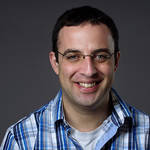Modulations in neural circuit dynamics and microstructures can translate to functional enhancements (e.g., upon plasticity), or, conversely, to severe functional deficits (e.g., upon neurodegeneration). Noam and his team are interested in identifying and investigating the links between such longitudinal functional modulations, their underlying micro-architectural modifications, and the ensuing behavioral responses in vivo. To this end, we harness ultrahigh field Magnetic Resonance Imaging (MRI) coupled to specificity-endowing modalities such as optogenetics and optical microscopy.
Read more about his work here


